Polygon 2.0 : The Ultimate Guide
 Mrinmoy Porel
Mrinmoy Porel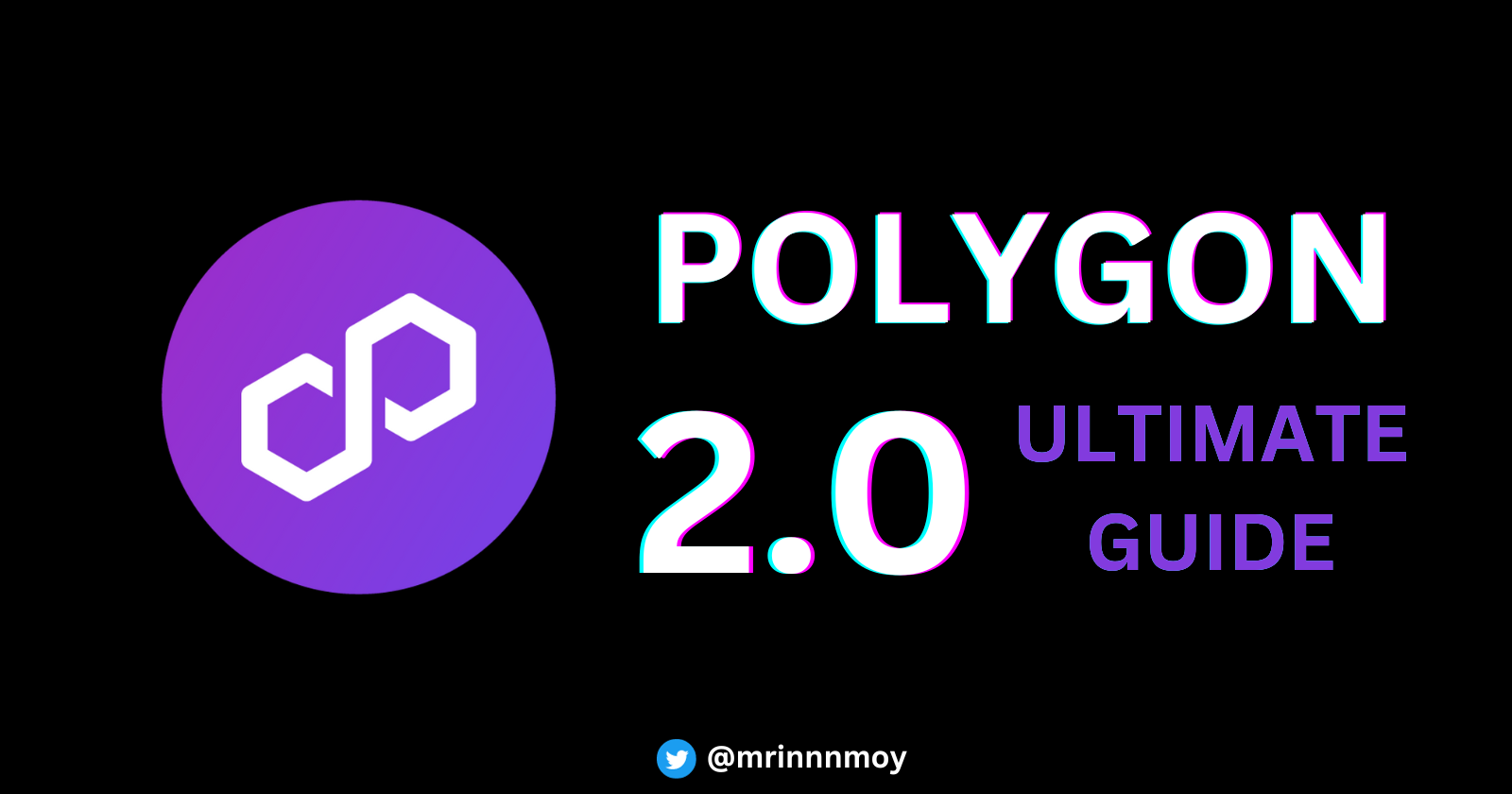
Introduction.
In this article, we will cover everything you need to know about Polygon 2.0. We will first cover the history of Polygon and how it has evolved to get us to where we are today in this vision of Polygon 2.0. We will then dive into the specific details of the 2.0 roadmap, covering everything from Polygon PoS, ZkEVM, CDK, Miden and ID and later on we will dive super deep into technical details of things like type 1 and type 2 provers as well as innovations. By the conclusion, you'll have a thorough grasp of each of Polygon's various products, why they are calling it the value layer of the internet, how they all work together, and what this means for Polygon's future as part of this 2.0 roadmap.
Matic & Polygon's History.
Polygon, formerly known as Matic, was a company founded in late 2017 to launch a blockchain that would eventually launch in mid-2020, addressing the scalability issues that existed on Ethereum. The way it worked was by using this technology called "plasma" to take the load off of Ethereum on what is typically known as a side chain or a committed chain known as the Matic or later rebranded to the Polygon PoS chain that we know and love today.
Plasma is just a technology that was built to address the scalability issues that Ethereum faces because people on the Ethereum blockchain were paying a lot of money in gas fees during the NFT craze to mint and transfer NFTs, which was kind of absurd when alternatives like Polygon were being built that were only a couple of cents to do the same transactions in different chains.
Today, we can see that this PoS network hosts almost 3 million daily transactions and over $5 billion in secured assets. This exploded so quickly as it was easier for developers and users alike to use the Matic network or PoS network because it offered far lower prices and better speeds for experiences that were emerging during the web3 boom, such as NFTs.
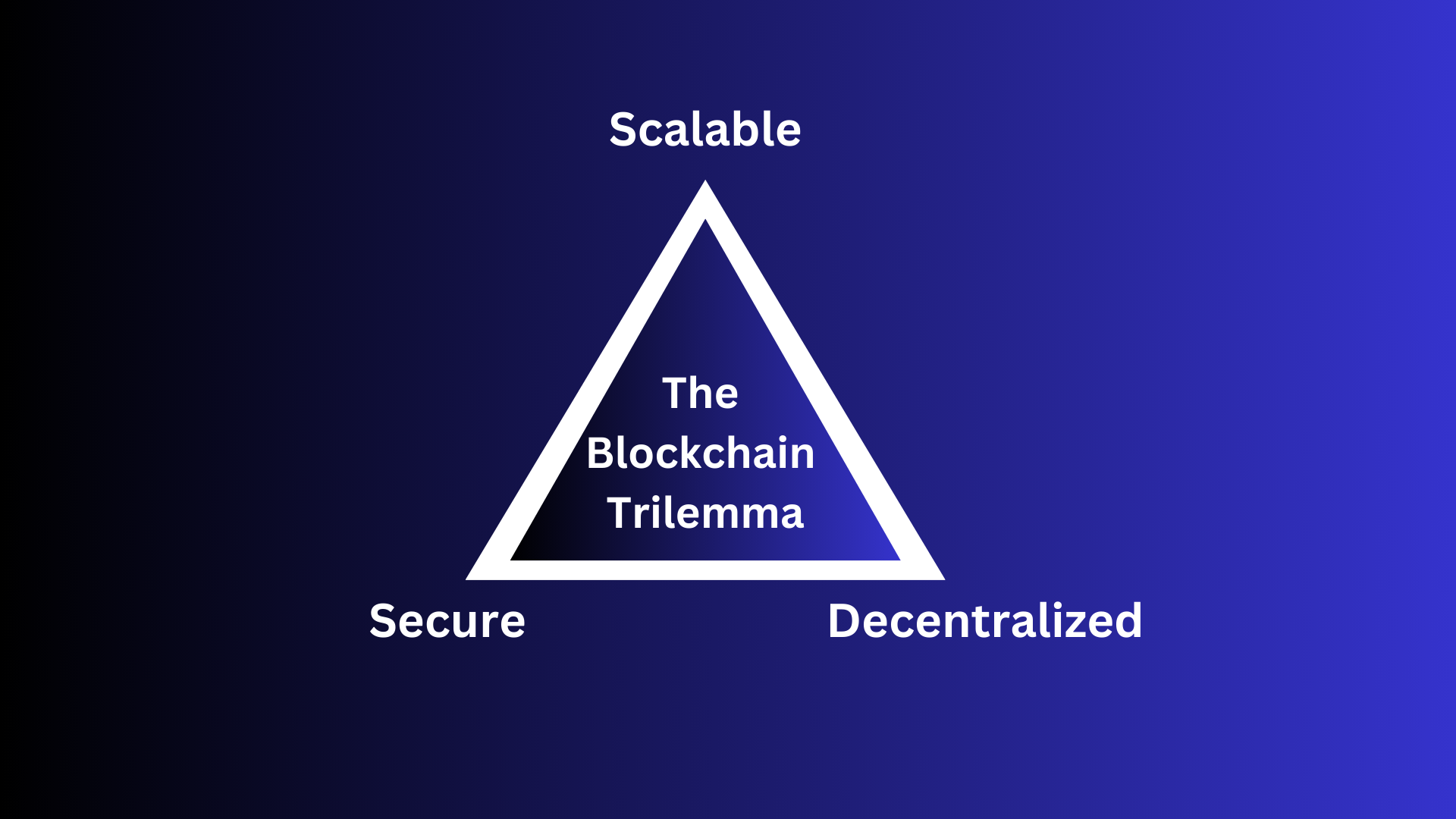
The reason these are being built on Ethereum is that it has a strong foundation for decentralization and security but lacks scalability. These issues are being addressed by these innovations to kind of hit that trifecta of scalability, decentralization, and security within one chain rather than constantly having to come out with a new thing or change the chain to meet the community's expectations of whatever the latest and greatest innovations are. So that's a quick rundown of where Polygon came from and where it's going now.
ZK Proofs - The Future.
To scale Ethereum, the decision was made to invest heavily in and go all-in on a single technology capable of powering all of these many scaling possibilities, and that technology is zero-knowledge proof. So that's a quick rundown of where Polygon came from and where it's going now. Essentially, zero-knowledge proofs will be used to power various scalability solutions that will attack this from multiple angles, using multiple different innovative technologies, while also connecting these experiences and technologies so that the user can use any of the technologies for their applications to build upon.
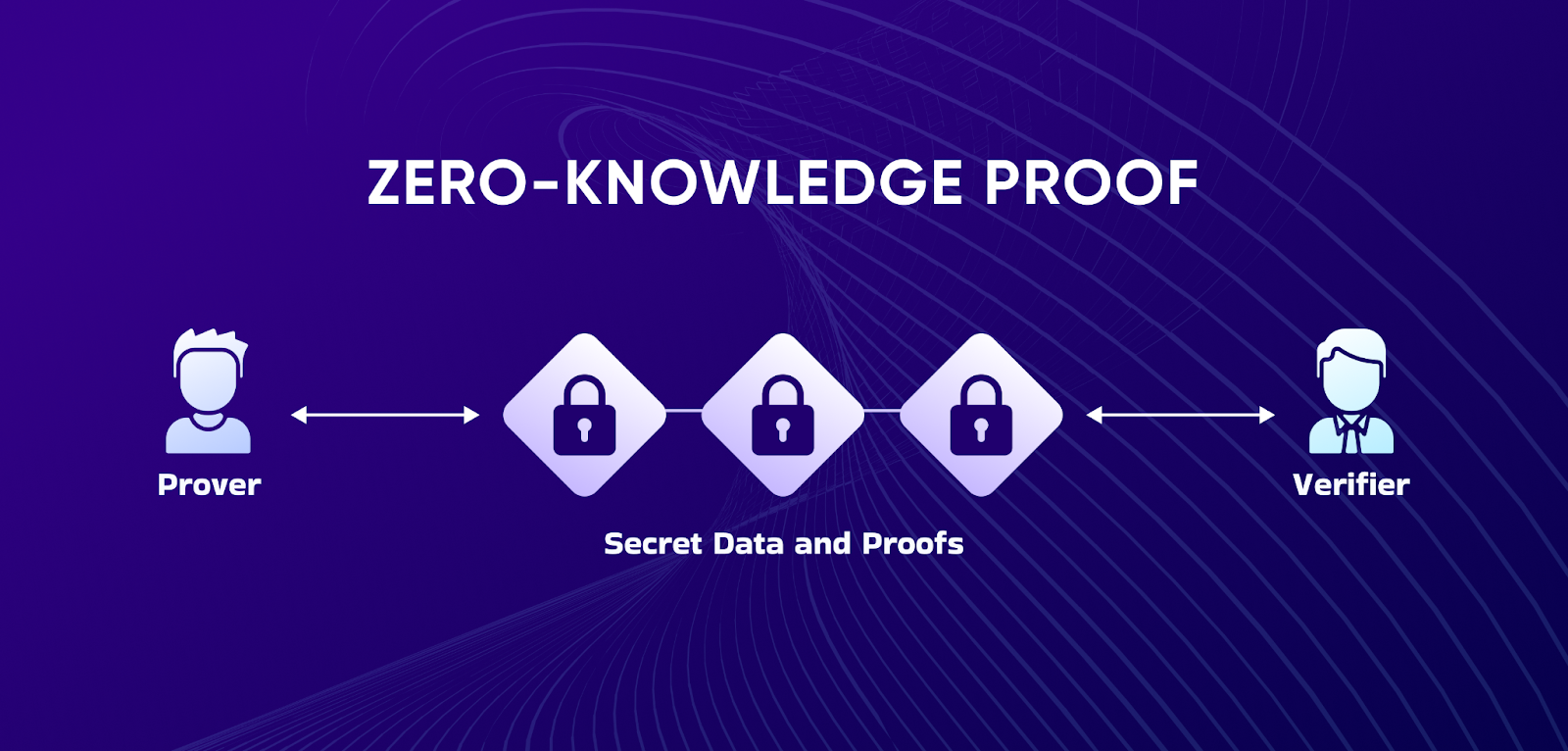
So that brings us to the next part of the story, where Polygon says, "Hey, we like the potential that these zero-knowledge proofs can have, especially in calling Ethereum, how can we invest and stop building and attacking the scalability issues that Ethereum has from multiple angles, all powered by zero-knowledge proof?" The polygon team then made two major acquisitions, the first of which was the Hermez team, which was a ZK-rollup and was acquired for $250 million in acquisition to collaborate and build in-house in the polygon team and help by attacking the scalability issues that Ethereum is facing by coming out with this zero-knowledge rollup scalability solution. Mir was the second one. This is a protocol created by a team of cryptographers and engineers to aid in the scaling of Ethereum, and it is the result of the Hermez acquisition, which was reportedly worth $400 million. The talent that joined these teams to tackle the scaling issues that Ethereum is facing by building solutions based on Zero-Knowledge proofs was a crucial component of this acquisition.
Polygon Miden was also released in late 2021, which was another solution attempting to address Ethereum's scalability issue from a different angle. So we have these 3 distinct channels coming together within Polygon at this point to create various products that address Ethereum scalability, and the culmination of all of this is Polygon 2.0, which was announced in June 2023. Polygon 2.0's purpose is to show how all of these products work together and integrate to provide users with a seamless experience.
What is Polygon 2.0?

We know polygon 2.0 is all about these ZK-Proof powered Technologies coming together in one kind of join ecosystem, but how does that work, when is the plan to release these products, how do they work together, where do the products fit in, and what technological innovations are critical to make this thing work that's what we're going to walk through next.
Polygon ZK-EVM
The first product we'll discuss is Polygon ZK-EVM. It entered mainnet on March 27th, 2023, and represents an EVM-compatible zero-knowledge rollup. So it's grouping transactions and using zero-knowledge proofs to validate those groups of transactions. I'm bringing this up first since it was the first production-ready zero-knowledge proof technology to emerge from Polygon, and it works by essentially running a rollup as a layer 2 chain by bridging money from layer 1 to layer 2.
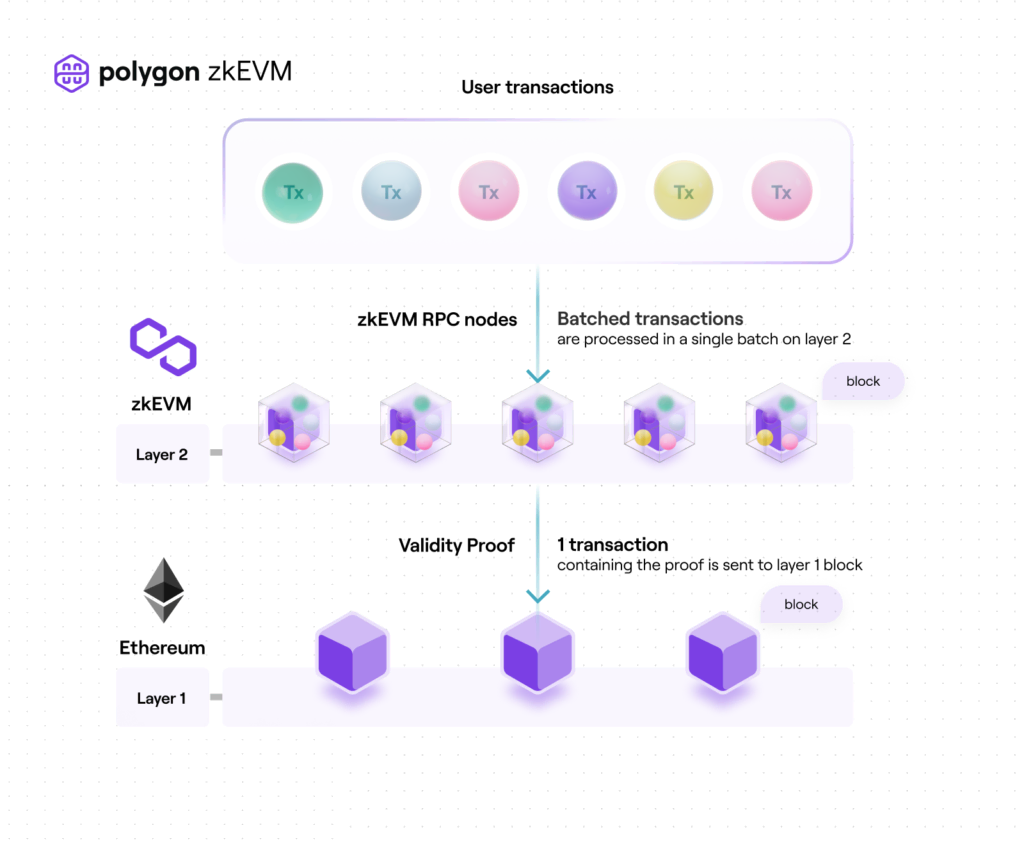
Users submit transactions to layer 2, which executes them and then performs 3 steps in the background so that it batches transactions together, sends all of those batches to layer 1 i.e., Ethereum, which is just a smart contract living on Ethereum, and finally generates a zero-knowledge proof and verify that proof on Ethereum. So the verification procedure that exists on Ethereum and is implemented in the Ethereum environment allows the Polygon zk-EVM to inherit the security and decentralization of the Ethereum blockchain while scaling it up in orders of magnitude.
Polygon presently has 2 blockchains in production, one of which is the original Matic network rebranded as the Polygon Proof of Stake or PoS chain, sometimes known as a side chain. More precisely, we may term it a commit chain because it does submit these checkpoints back to Ethereum, but it is a separate layer 1 to what Ethereum is. It has a two-way connection between Polygon PoS and Ethereum, however, it formerly ran a fully separate consensus system. It has its own set of validators and reaches these kinds of distinct blocks that Ethereum is now running on. It's almost like two separate ecosystems with a bridge in between to connect them, but you can think of them as two separate chains. Where Polygon's ZK-EVM differs is that it lives in layer 2, which is kind of above Ethereum, and posts everything back down to Ethereum, including transaction data. Polygon ZkEVM is a rollup, whereas Polygon PoS is a commit chain or a side chain.

Polygon ZK-EVM posts all data from transactions that occurred on layer 2 or rollup, as well as these zero-knowledge proofs that confirm the authenticity of those batches. The problem with this situation is that the Polygon PoS chain is perhaps merely technologically inferior to Polygon Zk-EVM. However, it has significant advantages, such as a big ecosystem, and if you build on the PoS chain, you may be in the same environment as the industry's top companies. So you get access to the same block space and ecosystem, the same community where massive brands like Nike, Starbucks, Reddit NFTs exist with huge value locked with huge transactions per day are all happening on this PoS chain, but then ZK-EVM comes along and says hey, we're arguably more secure than what PoS is doing because we're sending everything back in this rollup like fashion where transaction data gets back and we're using this new awesome technology of ZK-EVM.
So you can picture Polygon saying something like, "Well, our developers are split between PoS and ZK-EVM, and the only reason you'd choose PoS is to access the existing community," which is a significant factor. Polygon also claims that we'll need to improve PoS, which is what we'll discuss next as PoS evolves into Zero Knowledge PoS, but first, let's talk about ZK-Evm.
The addition of EVM compatibility to zero-knowledge rollups was huge because it meant you could tap into the entire Ethereum Community, which was previously not possible and was a huge sacrifice that ZKP rollups had to make in the past, where you had to expect developers to learn new languages, new tools, and users to on-board to completely new experiences and tools, which was a huge stumbling block. So ZK-EVM stepped in and said, "Hey, let's get the best of both worlds by accessing the entire existing Ethereum community." Everyone is familiar with all of the procedures from both a developer and a user standpoint, and we can also leverage this fantastic technology to demonstrate batches of transactions and achieve scalability with ZKP.
So the question is, why don't we use this ZK technology because of the benefits of security and decentralization that get inherited from Ethereum, which are some of the things the Polygon PoS chain sacrifices to some extent to achieve its current level of scalability, why don't we upgrade it to use all of this technology that we've invested in and built in-house and implement it in Polygon PoS chain? So the next topic we'll cover is how the POS chain will be upgraded to integrate ZKP technology and become the ZK PoS. So this is the second announcement as part of Polygon 2.0, which was released a week later on June 20th, 2023.
Polygon Proof of Stake
Polygon announced that the PoS chain that everyone knows and loves, which is where all the major brands are, which is where a massive amount of transactions occur and a massive amount of value is stored in the chain, is undergoing an upgrade to become ZK-EVM Validium, which is a mouthful and we'll get to what that means in a second. The entire point of this was to just upgrade our current chain that we're kind of running the PoS on to use all of this awesome ZKP technology to kind of upgrade the level of security that this chain achieves and kind of actually move it up into that layer 2 environment rather than just running it as a side chain or a commit chain.

Validium functions in the same way as a ZK-EVM rollup does. So you have access to the entire Ethereum developer and user community, and you go through all of the same processes and experiences as when interacting with web3 applications or games. The difference between a Validium and a rollup is that the difference between what was proposed of the PoS chain to become a ZK PoS and the ZK-EVM, which are kind of two separate chains, is that the ZK-EVM says, okay, we're going to take a secure approach where we're sending everything back to Ethereum. So you can truly reconstruct the entire chain using only what Ethereum has to offer. The difference between a ZK-rollup and a Validium here is that the Validium does not return all of the transaction data; instead, as seen below, it uses zero-knowledge proofs to ensure the validity of batches. The distinction here is that it does not send the actual transaction data back to Ethereum; instead, it posts the validity evidence, which includes the verified proof of transactions. This is due to the high cost of transferring data to Ethereum. The more data you send, the more frequently you call Ethereum, and the more data you transfer across, the more money you'll pay the Ethereum protocol in gas fees.
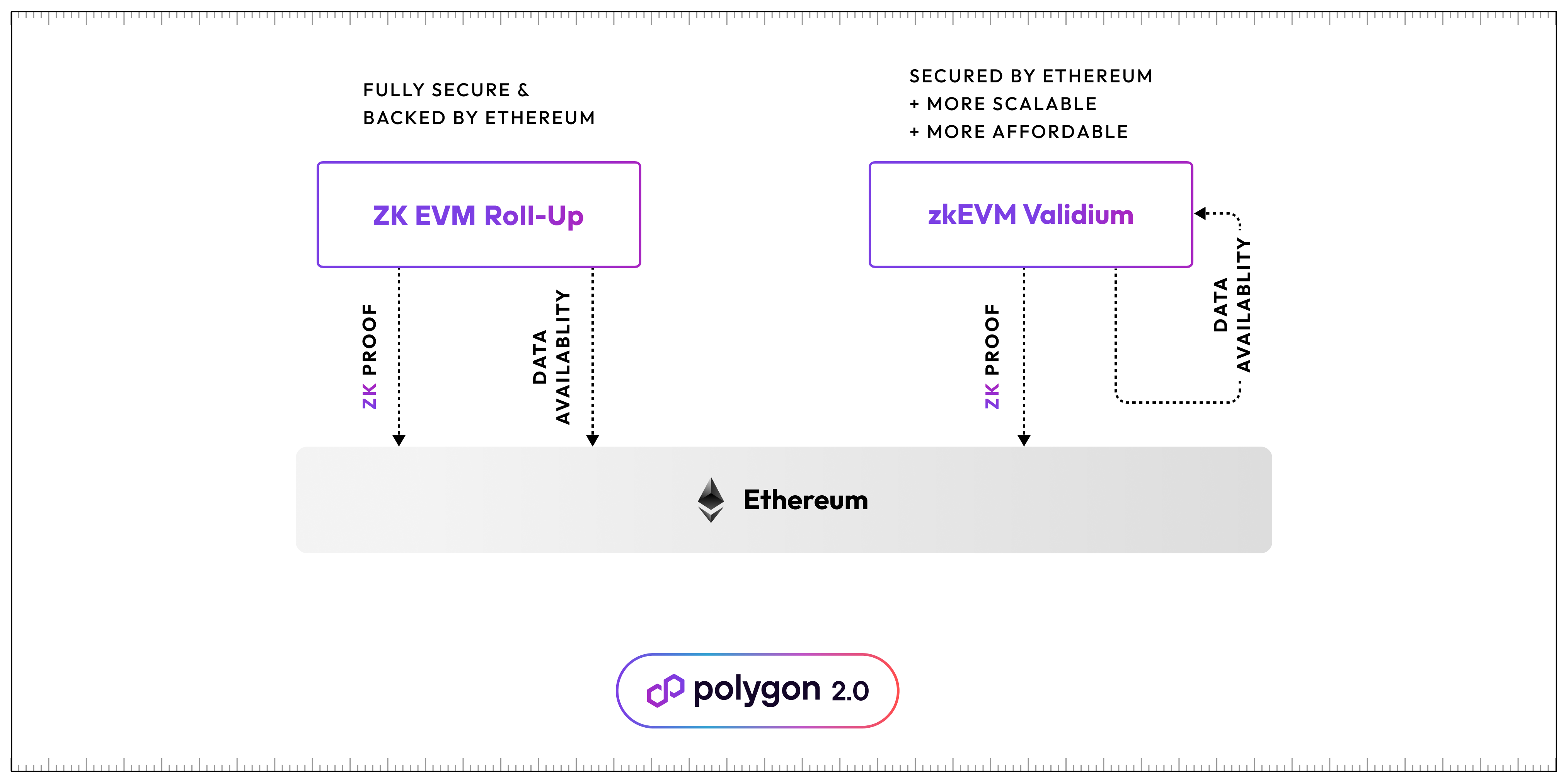
So, we have the ZK-EVM, which inherits everything of the decentralization and security of Ethereum while gaining vastly enhanced scalability from the ZK-PoS, which is a ZK-EVM Validium. So it's essentially a separate chain that doesn't return all of the transaction details. It still makes use of all of the investments and buildings made in the ZKP space over the last few years, but it only proves things and publishes the proof back, not all of the transaction data. As a result, it is less secure than the Polygon ZK-EVM, but it is more secure than the current state of the PoS chain. It simply states that we now have this extremely safe, very scalable chain known as ZK-EVM. Let's create something less secure than the ZK-EVM because transaction data is not posted back. Instead, let's focus on scalability, where we don't pay as much to send all of the transaction data back but still use the ZKP technology to ensure the validity of these batches of transactions.
It is believed the two networks can meaningfully coexist and complement each other:
Polygon zkEVM roll-up already offers the highest level of security, with the tradeoff of slightly higher fees and limited throughput. It is a greater fit for applications that process high-value transactions and where security is the priority, e.g. high-value DeFi applications.
Upgraded Polygon PoS (zkEVM Validium) would offer very high scalability and very low fees. It would be a great fit for applications that have high transaction volume and require low transaction fees, e.g. Web3 gaming and social and micro DeFi.
Polygon Chain Development Kit.
The Polygon CDK is the next product we'll discuss. Along with a piece of the puzzle that holds everything together, the interoperability layer will lie between the layer 1 and layer 2 environments here. So what we're going to talk about next is CDK, or the Chain Development Kit, and what it means for upgrading a Polygon PoS chain to ZK-PoS, and then we'll show you how the interop layer will come in and sit between the two layers that we have so far to kind of tie the experience together.
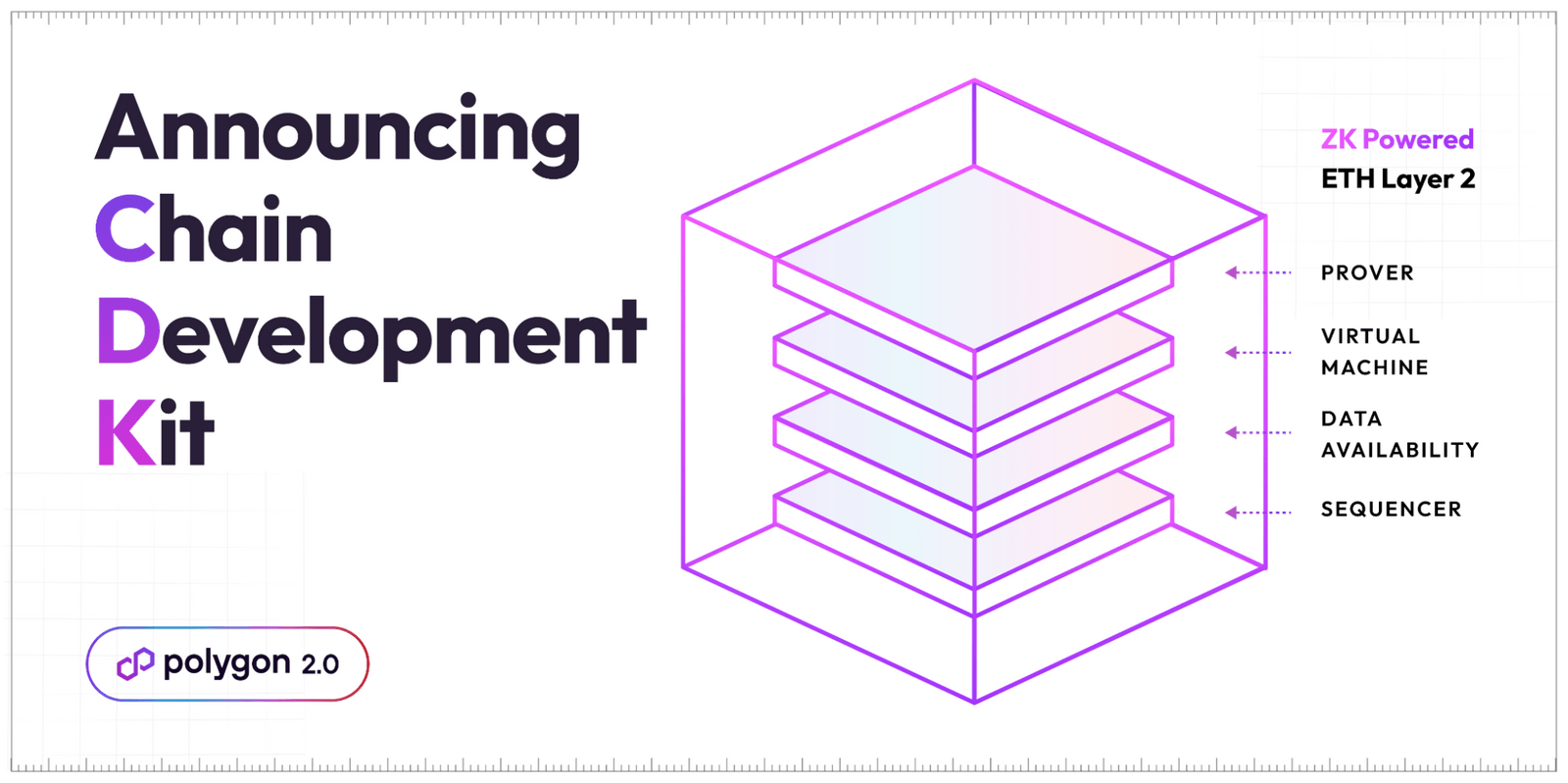
This brings us to an announcement made late in August 2023, which was the unveiling of the Polygon CDK, which was effectively a rebrand of Supernets but renamed to CDK, i.e., Chain Development Kit. It enables developers and businesses to come in and launch their own Layer 2 ZK-EVMs or ZK-EVM Validium in either rollup or Validium mode, leveraging the technology that has been developed to power their own chains. So the idea is that you pick and choose each part of the stack that you want, you pick what kind of validation you want, where your data availability goes, whether is it in roll-up or Validium mode, you pick and choose each aspect of the chain design with kind of custom rules that you can configure, like what token you use for gas, how the governance works, all of this customizable aspect powered by innovations that Polygon came out with their own ZKP powered.
So this removes a huge difficulty for developers looking to establish a chain. Creating your own chain is challenging, let alone running it, not to mention the price and amount of effort required. So you can make your own chain, as well as your own roll-up, which is probably even more difficult. Running your own EVM-compatible ZK-rollup takes a lot of time, money, and a lot of people who are probably wiser than the chain's operators. So this sort of solves the problem of people wanting to create their own chain with custom rules, the way the governance works or how the native gas token works, what tokens to use, how the chain operates, requirements you have to have to even use the chain. So this is a solution that allows you to launch your own ZK-powered Layer 2 in roll-up or validium mode. So, do you want something like the ZKP in Validium mode, which is more scalable and cost-efficient but does not send all transaction data down, or do you want something in roll-up mode, which is probably going to cost you more to run the chain and send everything back to Ethereum but has the added benefit of being able to rebuild the entire thing based on what information is available on Layer 1.
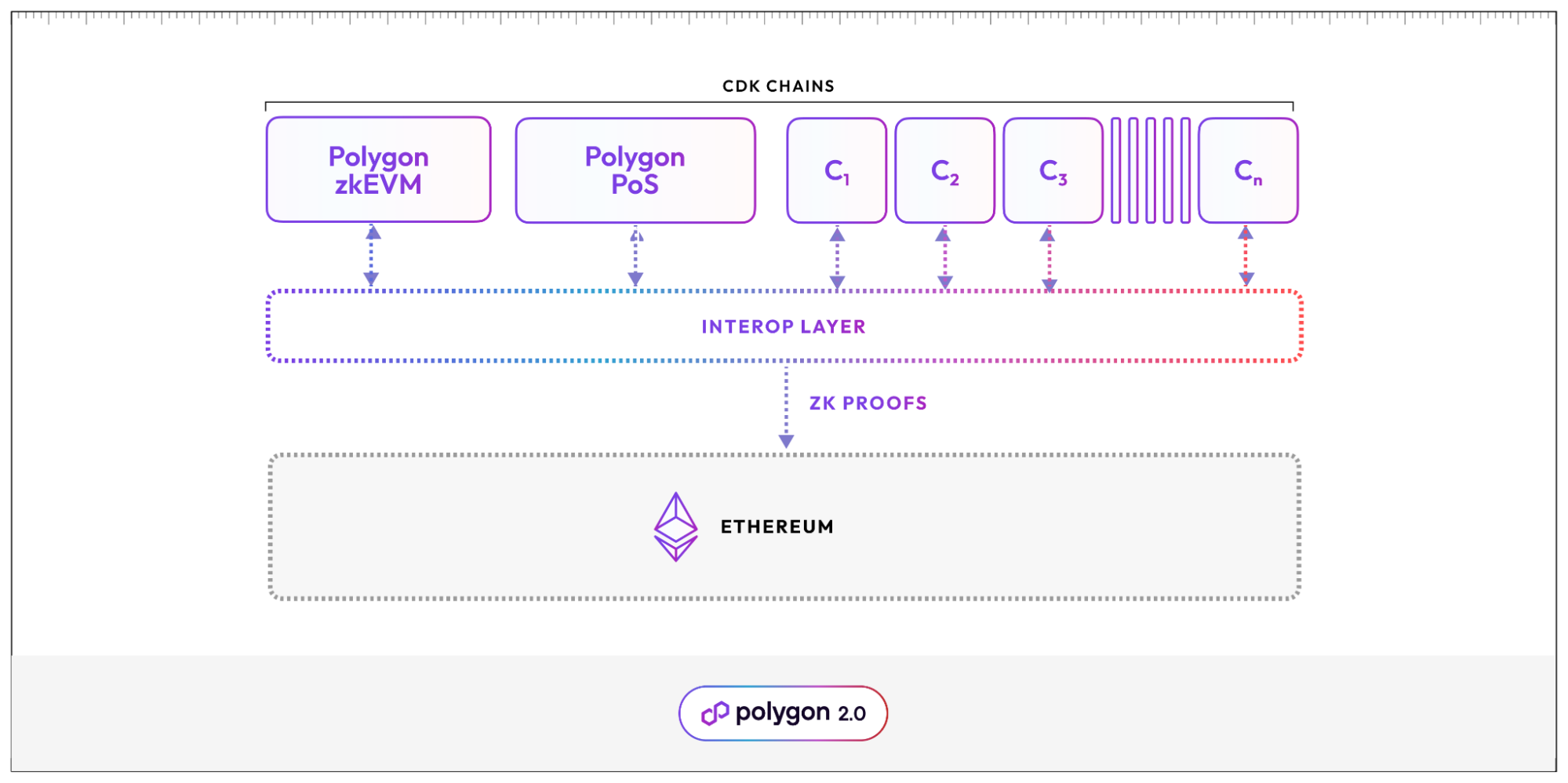
Now, in the diagram above, you can see the Polygon Chain Development Kit being added, which allows developers and businesses to come in and create their own custom-made chains with their own rules, which will use the same technology that the Proof of Stake chain and the ZK-EVM chain will use under the hood. Small CDK chains may be seen entering the Polygon CDK chain box and employing the same ZK technology. Manta, Immutable CDK chain, and many other CDK chains have already been announced.
Interoperability Layer.
Some of the announcements you'll see on Twitter propose that all of these communities that want their own chain and their own block space for various reasons come in and use this kind of all-in-one solution to create your own kind of gold standard for Layer 2 powered by ZKP, and these will all come into something called the interop or interoperability layer.
Moving on, the Polygon 2.0: Protocol Architecture, which was announced on June 29th, 2023, discusses the Polygon 2.0 vision's overall architecture.
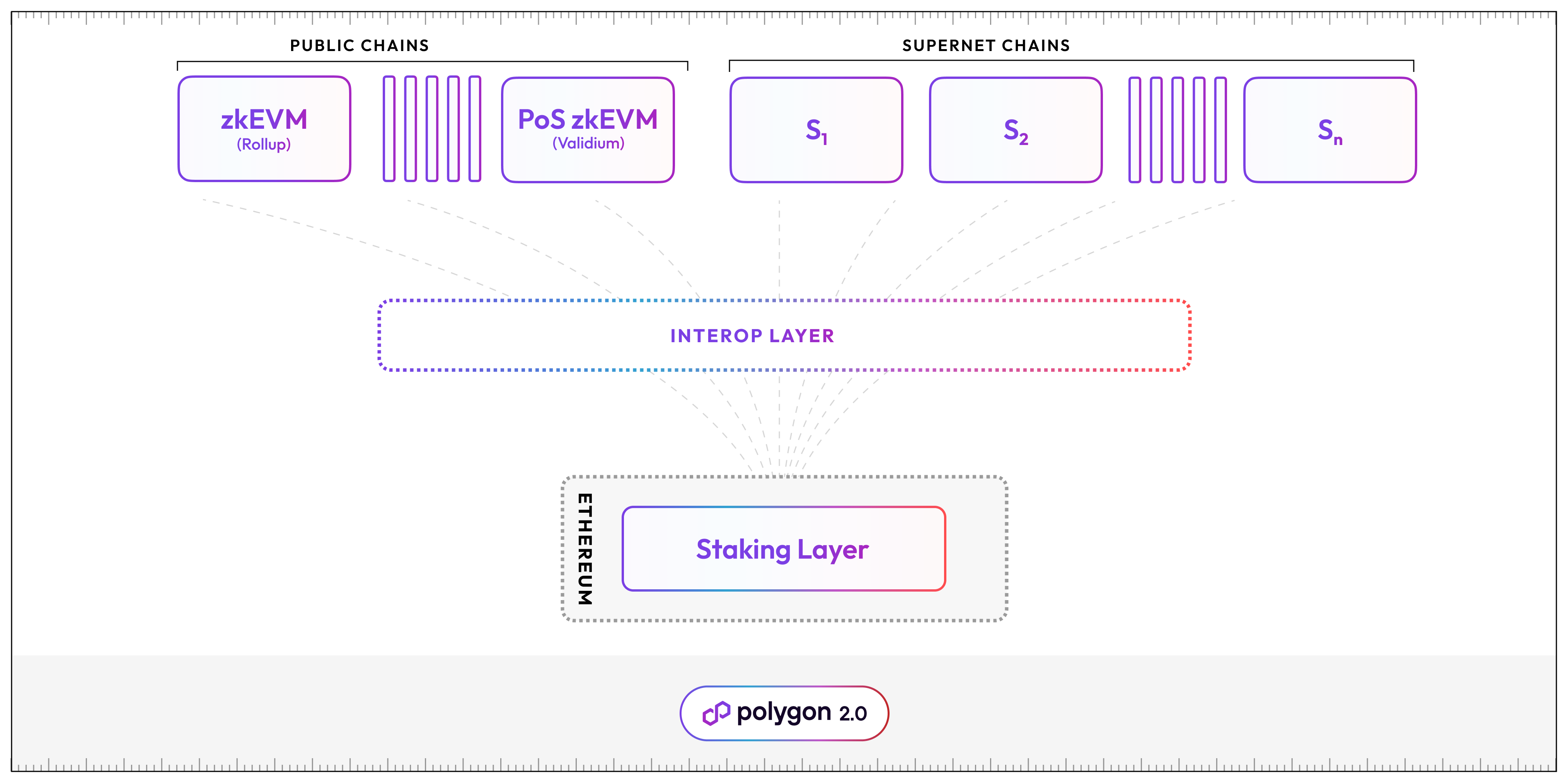
In the picture above, we see ZK-EVM, PoS ZK-EVM (Validium), and all of the previously known CDK-built chains (Supernet chains). These are all passing through the intermediate section here called the interop layer, which is what sits between all of these Layer 2's and Layer 1's. The reason for this is that all of the chains built with CDK, ZK-EVM chain, and ZK-PoS chain are not connected with each other, so you still face the difficulty of going from Ethereum to a Supernet chain and then back to Ethereum to another chain, which is a brutal process of bridging back and forth between Layer 2's to Layer 1 again and again.
So here comes the interop layer, which says, well, that user experience is pretty brutal, so let's add something in the middle here, which is the interop layer, and it stands for interoperability, which is just a fancy word for connecting the various Layer 2's that will exist in this top layer here. All of these chains send their zero-knowledge proof back down to the kind of middle layer here, and what this middle layer will do is post a single ZKP back to Ethereum. So all of these are going to go through this middle layer, and it's going to kind of aggregate them together and say well here's a proof of all of the proofs that happened on all of these chains, and just post that one proof back to Ethereum. We can see ZKP getting back here and optionally if rollup mode transaction data to make this a little smaller so you can always send ZKP down from the CDK chains to prove the batches of transactions that occurred and optionally if rollup mode you can also send all of these transaction data back as well now the important thing that the interop layer offers is that you don't need to go all the way back down to Ethereum and then back up to the Layer 2 it allows you to kind of seamlessly swap between all of these Layer 2's.
It is crucial to note that the interop layer is not yet in production, therefore connecting all of these chains is something that is scheduled to be released shortly. So you've arrived at a point where it doesn't matter which chain you build on, you can build on PoS and have your users seamlessly able to transfer across to Zk-EVM or have an experience on the Zk-EVM in the future without having to be exposed to that kind of brutal user experience of a bridging process between Layer 1 and Layer 2. You can live your life on layer 2, and all of these chains on layer 2 will be powered by the same ZKP technology that the adolescents are utilizing for PoS and ZK-EVM.
POL Token.
A very important question here, and this will lead into our next type of discussion, is how do we ensure that all of these chains are decentralized, and how do we build a system where people are incentivized to participate in these networks and get rewarded for their hard work and people are participating to make what they're supposed to be. This is where we first encounter the $POL Token.
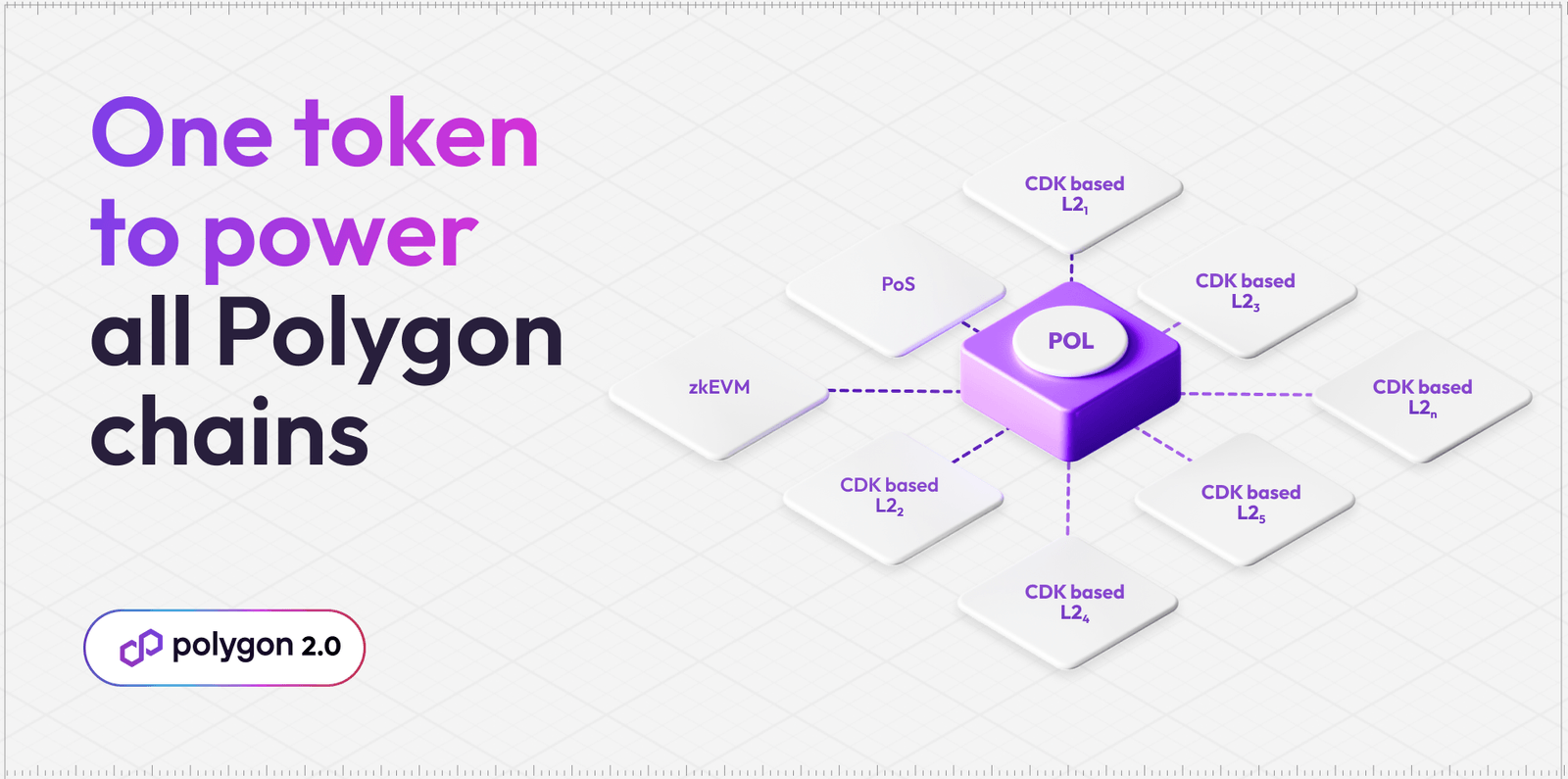
It was revealed on July 13, 2023. We can see from the diagram above that the $POL in the middle will serve all of the chains established by Polygon CDK, such as the ZK-EVM, ZK-PoS, and Supernet chains. This is a one-to-one upgrade that will take place within the smart contract logic. Essentially, users will migrate their $MATIC tokens, which currently only support and validate the PoS chain and reward people to make that chain decentralized in a delegated PoS manner, to become $POL instead of $MATIC. So it'll be a one-to-one mapping, where you'll send your $MATIC tokens through a smart contract and receive an equal amount of $POL tokens in return. $POL is also known as a hyperproductive coin because it may be used to engage in several chains. So you could participate in ZK-EVM, PoS, and CDK chains all at the same time, and you could also play multiple different roles in each of those networks at the same time, and it's used as a kind of incentive mechanism behind all of the different chains on all of the different roles.
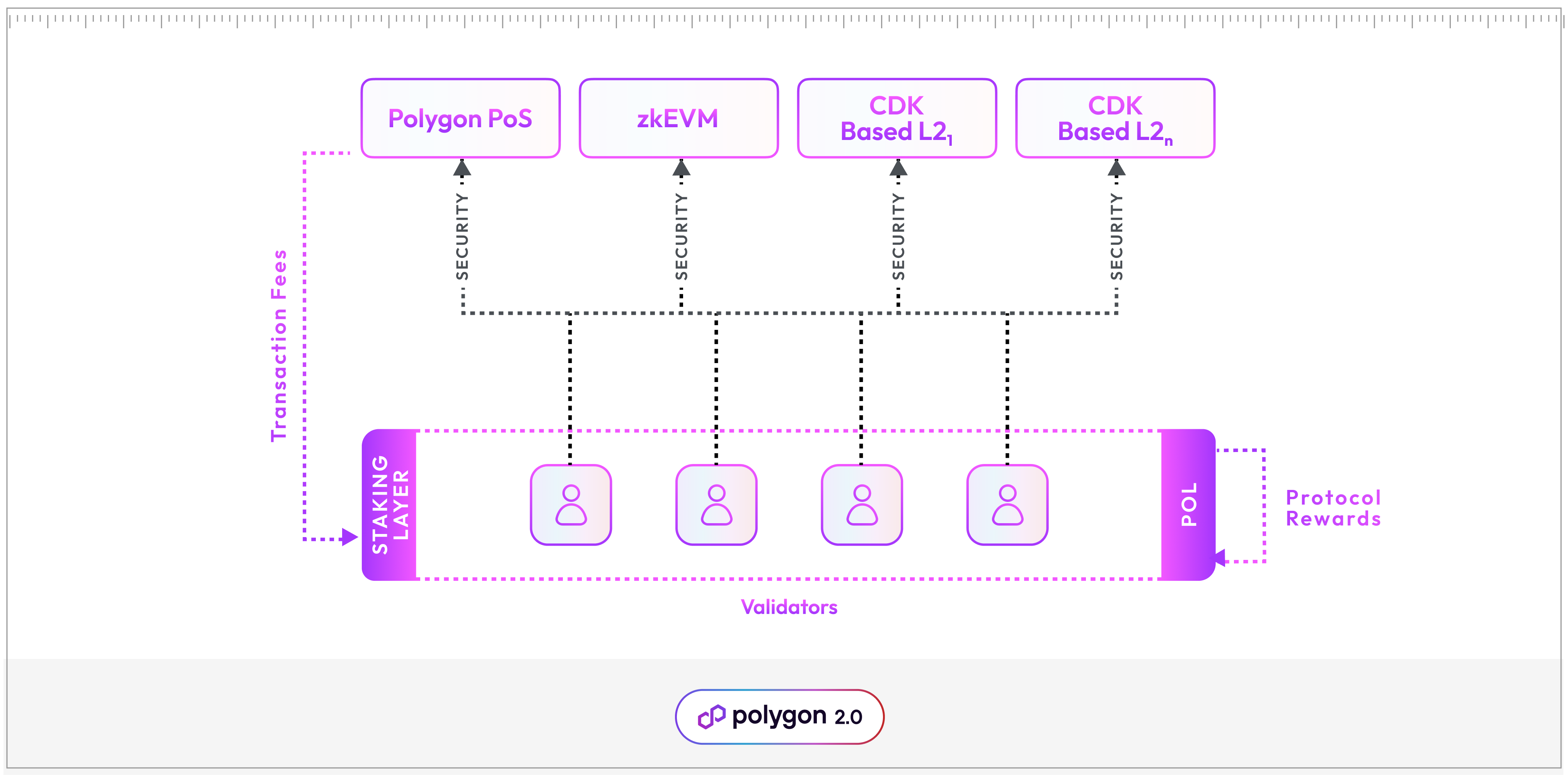
The diagram above suggests that $POL and the people participating in the network can use the $POL token to participate in multiple different ways and multiple different chains at the same time to add security to the kind of whole ecosystem that Polygon 2.0 encompasses, and if we go back in time to the protocol architecture and see the staking layer section, it essentially describes the stacking hub as a place where users can participate with their poll to help add security and decentralization to all of the layers that exist within the polygon ecosystem and on multiple chains you'll be able to do validation, accepting transactions, and generating blocks which is what most validators do in the current ecosystem you'll be able to operate in ZKP generation, participate in the data availability committee, and get all kinds of different rewards for the different roles that you participate in across multiple chains at the same time, which really ties together how these systems are going to maintain decentralisation and security because it's going to be powering people to be incentivized to actually perform those roles in the network.
Polygon Miden.
Everything we've discussed up to this point has been about the Ethereum Virtual Machine or the EVM world, so PoS and ZK-EVM are all ZK-EVM Layer 2 that are being built via the CDK. Returning to Ethereum, one other product that Polygon is developing is the Polygon Miden.
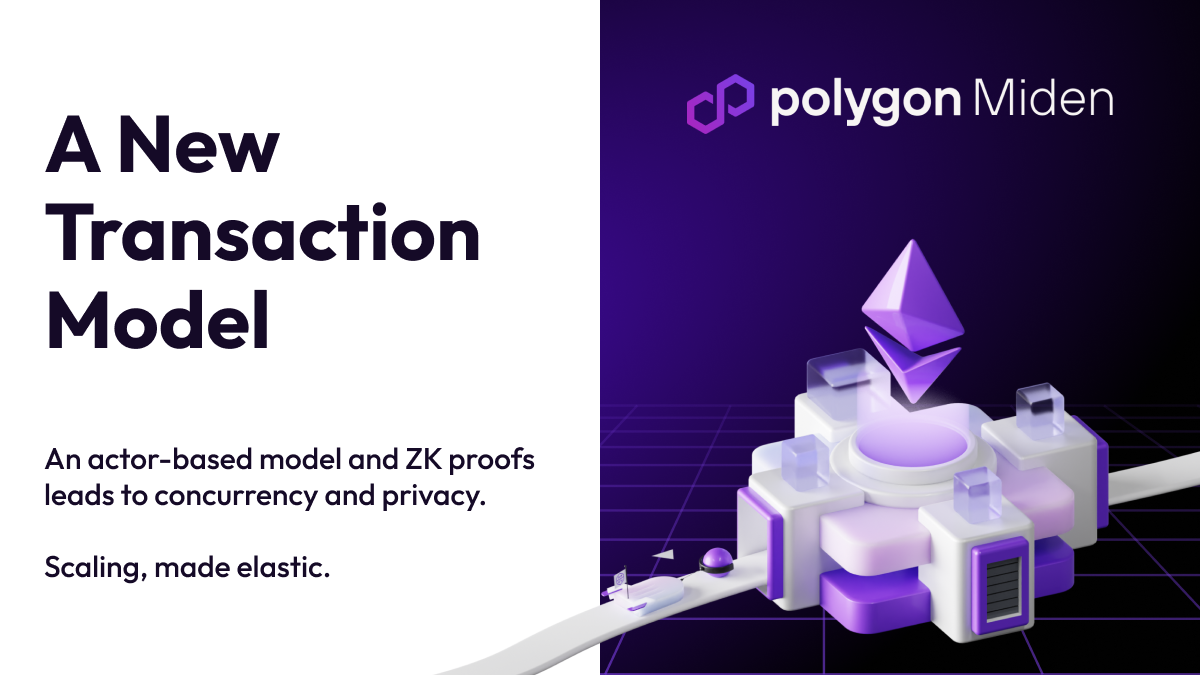
Polygon Miden is Polygon's way of saying, "Well, just like in the WEB2 world, not everything is going to be most suitable to the norm, I consider EVM the norm, and what if we went a different path to say let's optimize for ZK friendliness because EVM is not designed to be ZK friendly or optimized for ZKP." Creating ZKP that works within the EVM is extremely challenging. Miden is thus a non-compatible Zero-Knowledge Virtual Machine. So it's called Miden VM, and how it works inside is that, as you can see here, it prioritizes ZK friendliness or ZK optimizations over EVM compatibility to fully harness the potential of a ZK-centric architecture. So, instead of building the PoS to build the ZK-EVM, or building all of the CDK chains to be EVM compatible and adaptable, allowing the existing community to easily onboard to those chains, what if we took a different path and optimize completely for ZKP? So this Miden will coexist with everything we've discussed so far, it's currently in the pre-test net phase, so the testnet will be available very soon.
This is a kind of separate path where everything we've talked about is EVM and what if we went a different way where we use all of this awesome ZK technology differently to say okay what if you want to create an optimized application for a specific use case that you don't want to kind of make generally available for all EVM users, you want it to be a specific application that uses ZKP to their full effectiveness by giving a different VM named Miden VM.
Type 1 & Type 2 Provers.
Now let's switch gears and talk about the various types of proofs and technology that are powering both the ZK-EVM side of things as well as things like Miden because these teams are all working on ZKP and benefiting from the kind of work that's going in house at Polygon. Polygon is working on two different kinds of Poofs, one Type 1 and one Type 2.

Type 1 provers fundamentally mean executing everything as Ethereum expects, thus anything equivalent to Ethereum behaves the same, and everything Ethereum does is proven by Type 1 provers.
Polygon is also working on Type 2 provers, therefore Polygon ZK-EVM is now classified as a Type 3 ZK-EVM with a few minor tweaks needed to become a Type 2 ZK-EVM, implying it's EVM equivalent but not Ethereum equivalent. Returning to the Polygon products, ZK PoS will use a type 1 prover and the Polygon CDK chains will have the option of employing many types of provers.
Polygon ID.
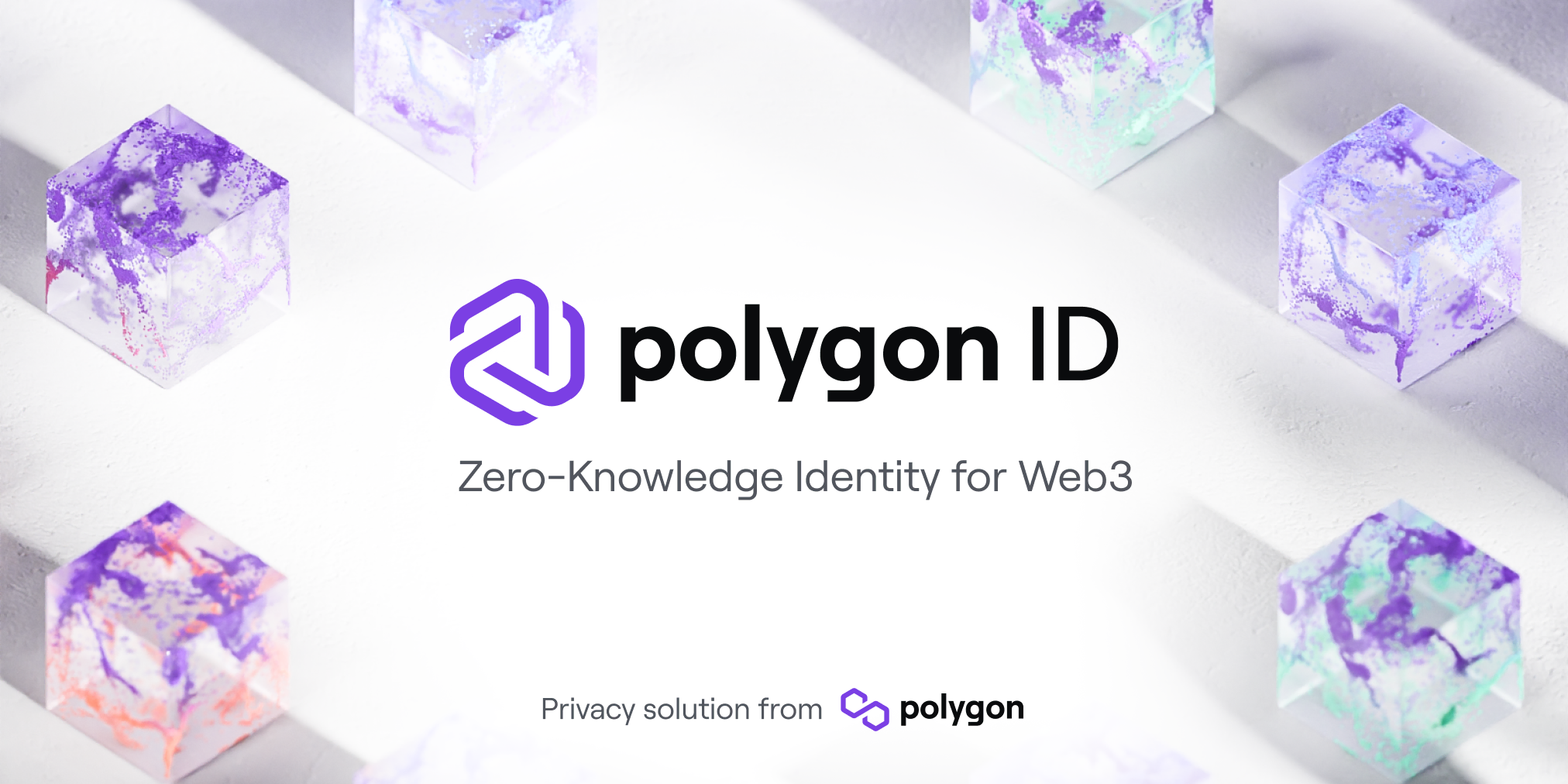
Polygon ID is a solution or toolkit for issuers, identity holders, and verifiers. Each of these jobs requires a unique set of functionalities, beginning with the issuer, who is responsible for creating the credentials that will be shared with identity holders. To ensure the interoperability of the trust triangle, they must adhere to certain criteria. As a result, Polygon ID provides the identification server. The identity server is an application that issuers can load and host on their own servers to keep all data secure. The identity server provides several endpoints as APIs that the issuer can use to automate the issuer's credentials within a workflow. So KYC providers, such as Oracle and social networks, can give credentials on identity, reputation, and data about identity holders in the form of verifier credentials that will be retrieved by a wallet.

Verifiers are the next actors in the game, they are the programs that will use these credentials to decide how and whether they will give services to the identity holder. These web2 or web3 applications have a verifier SDK available from Polygon ID, which is also open source. This is the case, and they are implemented in JavaScript and Golang, and they can be included in any decentralized application or any web2 application, but they can also be included in Smart Contracts. Polygon ID also provides on-chain verification, which means that we have created smart contracts that interact with the verifier SDK and allow you to verify credentials on-chain. This is critical since there should not be any trust assumptions, a holder can directly authenticate their credentials to a smart contract without any intermediary.
Basically, Polygon ID is a set of tools that lets every player in the covered architecture maintain and transfer confidence from issuers to verifiers using various open-source technologies.
Conclusion
Polygon 2.0 still has some improvements in the works to make all of these ZK systems more optimized with development. So that's all the material about Polygon 2.0 that's out there that hopefully people can absorb and understand about the many improvements that are coming out and what they truly imply.
References
Socials
If you enjoyed this article ❤️, recommend sharing this article with your peers and don't forget to check my social-media handles.
Subscribe to my newsletter
Read articles from Mrinmoy Porel directly inside your inbox. Subscribe to the newsletter, and don't miss out.
Written by

Mrinmoy Porel
Mrinmoy Porel
Hi I'm Mrinmoy👋. A software developer for the decentralized web. I contribute to open source, write blockchain tutorials, build projects publicly related to decentralization that the world needs to know about.